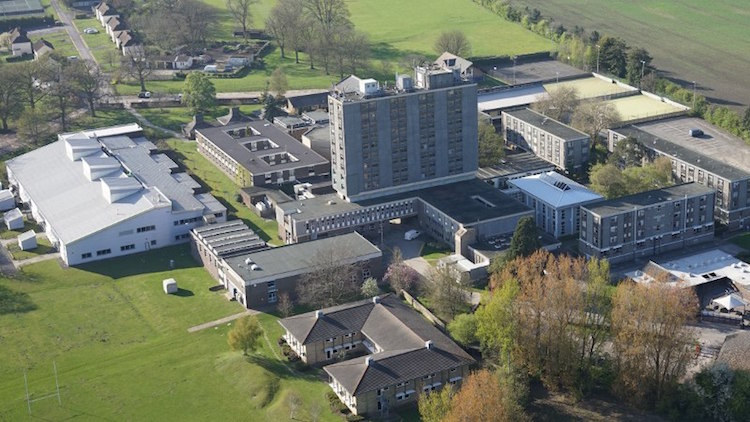
How does a university or hospital turn its disparate estate data into useful information that helps it make vital decisions? Provelio has harnessed Power BI to provide the answer as MD Jeremy Sneddon and Stan Hornagold explain to Denise Chevin.
In its work as a consultancy specialising in devising strategies for clients with large estates, such as universities and hospital trusts, it became apparent to Provelio that such organisations have a massive amount of disparate data but do not use it to their advantage.
“They have all of this data that a range of individuals who work there might know implicitly, but there’s no join-up and the systems don’t talk to each other,” explains Jeremy Sneddon, MD and owner of Provelio.
He continues: “They have probably commissioned a consultant to do a big survey and a big analysis about the carbon side of the estate, and come up with a significant programme of works of how they might decarbonise, for example. And that might be sat there within a system within the client organisation. But it is completely disjointed from the maintenance system, or from the capital projects system, and their growth strategy.”
To complicate matters, he adds: “Designated individuals tend to be the gatekeepers of the knowledge around those systems. And if any of those individuals leaves or retires, a massive amount of capability can be lost if there is now no one who is knowledgeable about the content or how to navigate around it.”
In response, Provelio, as part of its work helping clients digitise their portfolio management, has developed a new analytical system. “It helps estates managers navigate all of that morass of data, so they can decide their top priorities and arrive at clear decisions,” says Sneddon’s colleague, Stan Hornagold.
BIMplus: What type of things are you trying to integrate?
Provelio: We integrate:
- sustainability and utilities consumption data;
- maintenance and condition survey data;
- infrastructure running costs, financial planning data;
- space planning and use data;
- compliance, asbestos and fire management data; and
- existing capital projects data.

‘Estates have all of this data that a range of individuals who work there might know implicitly, but there’s no join up and the systems don’t talk to each other’
To take one example, we are working with a university estates team. We have created a tool where you can see what is happening across different parts of its estate. It pulls together all the systems that usually do not talk to each other into one user interface.
The university has a backlog maintenance programme, which is underpinned by condition survey information for all their buildings.
The university has signed up to become carbon neutral and is working out how it should do that. Does it put PVs on all its roofs or does it change all its heating systems? Does it change all its windows from single-glazed to triple-glazed?
On top of that, the university has a business plan for how it is going to change over the next 10 years – how many students it is going to get in, what academic disciplines it is going to push, and what it is going to do with its campuses to support those strategies.
It also has a fourth strand to consider. Sports courses are a big part of its USP, so it has a special business plan for that as well.
What we’ve done is taken all this information and created a scenario tool – essentially a computer simulation. With it, senior management within the university, and especially the director of estates, can look at different scenarios over the coming years and evaluate the best way forward.
So now, if they click on a map of one of the campuses in the system, it brings up information about those buildings including, say, the maintenance cost or the cost of decarbonisation of the buildings on that campus. The style and content on the dashboards are tailored to the client.
What’s the name of the tool you are using?
We gather raw data from the estate and wider organisation, such as building conditions, utilities consumption, project information and running costs, then pull, and transform this data into a SQL database we have created. This allows us to join lots of disparate systems together into a single source of truth. We use a unique taxonomy and data framework to ensure these sources talk to each other.
We then use this database to calculate priorities, forecast benefits and structure a series of outputs, which can feed into Power BI. Power BI – the standard Microsoft reporting tool – acts as the user interface as its highly intuitive visual, and allows for dynamic interactions with the data.
We have designed a suite of Power BI templates to enable users to specifically interact with our model and present the information in a meaningful way that enables them to make strategic management decision on the future of their estate.
‘It is a bit like COBie in that the process sucks the data into a common environment, which enables it to be analysed and used effectively’
It is a bit like COBie in that the process sucks the data into a common environment, which enables it to be analysed and used effectively, but you are not changing the base source of that data.
Anyone who’s got a Microsoft 365 account can access Power BI – although that’s not widely known.
We are working on the back-end delivery side of the programme – how you capture the data and how you design the tools around extracting the right data.
The person who runs this section for us doesn’t have a built environment background. He’s an economist who cut his teeth within Provelio doing cost analyses of massive databases of the British forces. The estate side was in there, but it was everything from the cost of a tank, to the cost of a rifle, to the cost of training an aircraft pilot.
Will you be offering this facility as routine to clients?
Yes. We very much see what we’re doing as digitising the whole estates function. What we have demonstrated and talked about is the front-end strategic decision-making tool. But ultimately it defines a programme of works. And we continue to develop all the tools around how you would then deliver that programme, and capture all the data within the delivery.
Downstream aspects such as the Building Safety Act and golden thread of information will be completely linked into this through a project management tool we use called Method Grid.
What other benefits does this approach provide?
Once you start seeing the power of this data, and the way that you can intuitively use it, then it really generates a different line of thinking around how in the future clients might want to start capturing data.
So, for example, the university we mentioned has large single source FM contracts for security and for catering, but it has not broken down those cost centres by individual buildings. That information gap has led to a conversation around when it re-lets those contracts. The university already knows it is going to structure them so that it can capture costs per building, so you get a much more granular view when you decide whether to repurpose a building, or whether to knock one down or rebuild one. It helps you understand how all this affects your OPEX costs as well as your CAPEX costs.
Another type of information this university might want to start collecting is levels of room occupation. Most organisations know theoretically what their occupation levels should be. But the university is only now starting to look at and capture what its occupation levels actually are. This will have a real strategic bearing on how it moves forward. By mining its data more efficiently, the university can see how it needs to change its practices in the future.
What is the ultimate goal?
Our aim is to provide a tool to be able to look through many different lenses, many different scenarios, for optimising how clients strategically deal with an estate.
One scenario might be that you want to minimise disruption. If you put that scenario through and put your weighting on your occupancy level to minimise disruption, it will come out with one programme, with one cost profile, and it will show you year-on-year how much carbon saving you will achieve during that programme.
Who are you working with on this?
We are working with several universities, including Bath, Southampton and Oxford Brookes, and an NHS Trust in Bristol. We are also in conversation with a large developer about how they could use it.
It’s not just about maintaining and looking historically at the estate. With a developer, it might be about looking at income and cash profiling and investment profiling. So you could use this tool in a very different way. The application is only limited by the data that you can capture.
In an NHS Trust, you can capture health outcomes and tie it back to your buildings.
It is only now that the technology is getting to a place where these kinds of tools can really start leveraging in this level of visibility.
What is the next step?
I can see us starting to embed things like AI into this, to make it an intuitive model. And ultimately, it is tying in with things like BIM, and the 3D visualisation and 3D fly-throughs.
Don’t miss out on BIM and digital construction news: sign up to receive the BIMplus newsletter.












